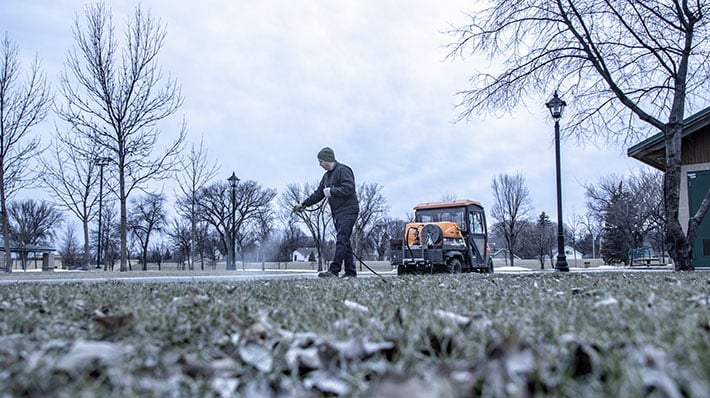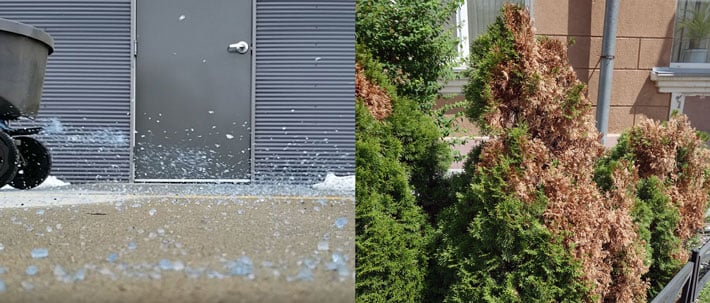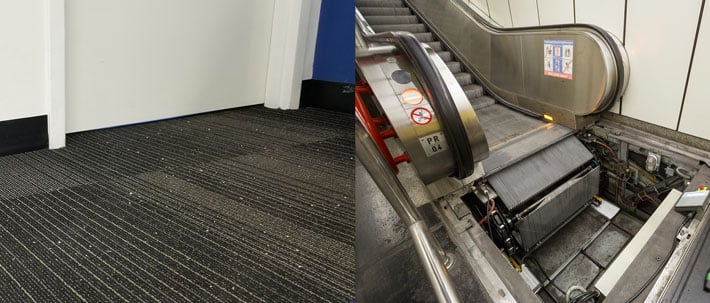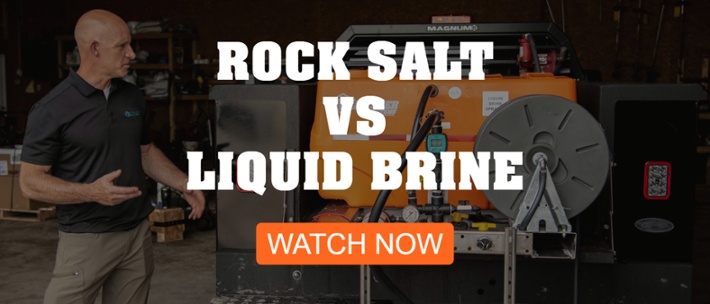
As snow and ice control contractor, you're always trying to provide the best service to your clients. In this post, Phill Sexton will discuss the benefits that using liquid brine has on your level of service and how it effects your crews.
The Increasing Expectations of Clients
What does level of service really mean and where does salt use and changing the way we apply it fit in to that. Salt use has been used more as very much a reactionary method to break the bond of ice. Now we're thinking about it more from a proactive standpoint or more of a bottom-up approach versus a top down approach (pre-storm versus post-storm). So why would the customer care about this, or the property owner? Really what it boils down to is their level of service expectations.
You may have for example, a client that you've been working with for many years now. Generally speaking clients always expect a little bit more every time we do something. They expect a little bit more related to their level of service. So we've gone from an industry where white parking lots or semi-hard packed roads were acceptable at one time years ago, to an industry where you hear things like...
- Zero tolerance
- Black and wet
It's gotten to the point where the clients perception of quality of service is seeing the salt on the surface. That's one of those mindsets we're going to need to change because you don't necessarily need to see it for it to work, and generally speaking when you don't see it, that's when it's in brine form and that's when it's actually working. So that paradigm shift is something we're going to have to think about next when we talk about the level of service related to what our customers expect to see and expect to get as far as level of performance.

Reducing External & Landscape Damage
When you drill down on just what it’s providing you as an applicator for level of service and how it’s performed, in the traditional model using solid salt, the salt comes whipping out the back of the spreader, most times nobody is measuring the actual amount, so not only do we not know what the application rate is; but many times those application rates are very inconsistent (depending on if it’s a different pile of salt or depending on the moisture content), so there could be twice as much or twice as little coming out of the back. Then you have the issues with clumping, or clogging the spreader, so that’s actually more downtime and frustration at the operations level.
Once the application has reached the surface of the parking lot or sidewalk there’s that bounce and scatter effect.
|
RIGHT AWAY THERE’S AT LEAST 20% WASTE
|
Generally people expect to see a result from our efforts by say 7:00 A.M.; that's when they want to see that salt doing something. So, if 6:30 A.M. is the first chance you’ve had to put down that next application of salt, it may not be taking effect by 7:00 A.M.. So it is important to consider that...
|
THE SALT THE WE NEED TO REACT
|
Would you rather have the brine go down immediately or wait 30-45 minutes for it to convert to a brine? Which one is going to give that client of yours the level of service they’re really expecting? Now let’s look beyond the traditional way we see it. We see a parking lot, we see a sidewalk. But let’s think about it in terms of the landscape and what that’s doing to the external periphery of the property.
In most cases we're creating burn and problems with...
- Turf areas
- Trees and shrubs
- Other ornamentals
It may not be a first year affect but it’s a cumulative effect over years. Mostly, that's what's killing things like...
- Trees
- Turf
- Landscapes

Reducing Internal Building Damage
And in many cases our customers are having to budget for the issues we are creating with salt to be rectified in the landscape season. Now let’s think about this from the perspective of the building, which is sometimes the easiest way for us to think about it relating it to our clients experiences.
Many times our clients are...
- Property owners
- Property managers
- Facility managers
a lot of their focus is really at the building level and inside the building; so rather than look at it from this exterior view, let’s think about what happens to salt right at the doorway as it enters into the building. There have been studies that have shown…
|
THAT SOLID ROCK SALT IS LIKE
|
So imagine what that’s doing to flooring, to door jams, and when it gets inside the building and escalator or elevator system. Many times when you see systems broken down in a building, that’s usually the reason why. Because that material has made it into the system and caused some sort of corrosion or malfunction.
So thinking about how far that material tracks into the building, studies have shown that material can track into a building as far as 1,000 feet. Then that causes new issues for cleaning and damage to things like carpet inside the building. What if we could change the way that we do this, so that there’s no solid material ever entering that building. That’s where liquids come into play.
I trust this post has helped you see how using liquid brine in your operation can improve your level of service and keep your customers happy. To shop our variety of liquid brine sprayers, visit our website. If you have any questions, feel free to comment below and we'll get back to you.
Interested in more FREE TRAINING? Here are links to the complete course:
Why is Using Liquid Brine Important? [1 of 10]
Environmental Benefits of Liquid Brine [2 of 10]
Economical Benefits of Liquid Brine [3 of 10]
Level of Service Benefits of Liquid Brine [4 of 10]
Rock Salt vs Liquid Brine [5 of 10]
Preventing the Bond of Snow & Ice with Liquid Brine [6 of 10]
What are the Barriers of Switching to Liquid Brine Deicing? [7 of 10]
Why Aren't More Clients Asking for a Liquids Approach? [8 of 10]
How do we Make the Change to Liquids? [9 of 10]
Liquid Brine Spraying Techniques [10 of 10]



